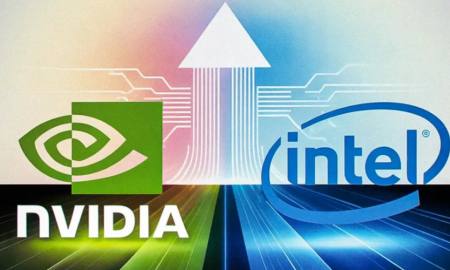
Master This Key ROI Formula for Smart Investment Decisions

Every smart investment starts with a clear view of what you are getting back. That is where return on investment (ROI) comes into play. It is powerful enough to help you choose between a good move and a costly mistake.
Your ROI shows how much profit you have made from an investment, compared to what you spent. You can use ROI for just about anything, from stocks to real estate to marketing campaigns. A high ROI means your investment paid off well.
A low or negative ROI means you probably lost money or barely broke even.
Here’s the core formula:
ROI = (Net Return on Investment / Cost of Investment) × 100
First, figure out how much profit you actually made. That is your net return. Let’s say you bought a stock for $1,000 and sold it for $1,200. Your profit, or net return, is $200.

RDNE / Pexels / ROI is useful, but it has blind spots. If you only use it to guide your decisions, you might miss some important stuff.
Now take that $200 and divide it by your original investment of $1,000. Multiply that number by 100, and you get 20%. That means for every dollar you spent, you earned 20 cents in profit. That is a solid return, especially if you made it fast.
What Counts as “Cost of Investment”
Don’t make the rookie mistake of only looking at the price tag. The cost of investment should include everything. That means transaction fees, taxes, maintenance, upgrades, whatever it took to make the investment happen.
If you skip these, your ROI will look better than it really is. That is not helpful. It is like checking your weight but ignoring the donuts you had for breakfast. Be honest with your numbers. It gives you a real picture of how your investment is doing.
First problem? Time. ROI doesn’t care how long it took to get that return. A 50% return sounds amazing, but not if it took 10 years. That is why savvy investors use Annualized ROI, which breaks your return down per year.
Risk Doesn’t Show Up in the Math
Second big gap? Risk. ROI doesn’t tell you how risky the investment was. You could have earned 30%, but if there was a high chance of losing everything, was it really worth it? That is something the formula can’t measure.
Some low-risk investments bring in lower ROI, but they offer peace of mind. That can be a smarter play in the long run. Chasing high ROI without checking the risk is like speeding down a highway blindfolded.

Anna / Pexels / To make better investment decisions, pair ROI with other smart tools. Ideally, start with Annualized ROI.
ROI Can Be Twisted
The third issue is how the numbers are used. ROI can be manipulated. People can pick and choose what costs to include and what profits to count. That changes the results big time.
Two investors might claim the same investment had totally different ROIs, just because they used different math. Always check the fine print. When comparing options, ensure that everyone is using the same method.
This way, you won’t be tricked by investments that look great only because they took forever. Speed matters. The faster you get your return, the more powerful your money becomes.
Leverage means using borrowed money to make an investment. It can seriously boost your ROI because you are using less of your own cash.
But leverage cuts both ways. If your investment tanks, your losses can multiply just as fast. Always know your limits. Don’t let a tempting ROI lure you into risky territory without a backup plan.
More in Investments
-
`
Can Anyone Really Blame Mariah Carey for ‘Leaving’ the Real World?
Mariah Carey isn’t like the rest of us. From the moment she opens her mouth and that voice pours out, she...
October 10, 2025 -
`
Intel Invests in Nvidia, but Ratings Remain Unchanged
Intel’s stock jumped more than 30% after news broke that Nvidia poured $5 billion into the company. The rally sparked renewed...
October 5, 2025 -
`
Homeownership vs. Real Estate Investment: What’s Better?
Homeownership has long been seen as the American dream. But today, more people are asking: Is it really the smartest way...
October 3, 2025 -
`
Why the Armani Fashion Empire Is Set for an IPO
Giorgio Armani, one of the most iconic names in global fashion, left behind a detailed plan for the future of his...
September 27, 2025 -
`
Why Do Pokémon Cards Outperform the S&P 500 As an Investment?
Pokémon cards have outperformed the stock market by a mile. Since 2004, they have delivered a staggering 3,821% return, according to...
September 27, 2025 -
`
America’s Billionaires Get Older—Millennials Wait for Wealth Transfer
Many of today’s billionaires don’t match the youthful tech-founder image often portrayed. While names like Elon Musk, Sam Altman, and Mark...
September 21, 2025 -
`
Can President Trump Legally Fire Fed Governor Lisa Cook?
Lisa Cook is right in the middle of one of the most explosive legal battles in Washington. President Trump wants her...
September 20, 2025 -
`
Jeff Bezos’ Advice for Millennials Who Want Financial Success
Millennials today have grown up in a world where instant access to products and services is the norm. From two-day deliveries...
September 13, 2025 -
`
Maison Margiela’s First-Ever Celebrity Campaign Stars Miley Cyrus
Miley Cyrus just changed the rules again. In August 2025, she became the first celebrity ambassador in Maison Margiela’s 37-year history....
September 12, 2025















You must be logged in to post a comment Login